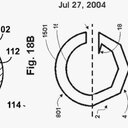Comparative hepatotoxicity of 6:2 fluorotelomer carboxylic acid and 6:2 fluorotelomer sulfonic acid, two fluorinated alternatives to long-chain perfluoroalkyl acids, on adult male mice.
Keywords
Abstract
Due to their structural similarities, 6:2 fluorotelomer sulfonic acid (6:2 FTSA) and 6:2 fluorotelomer carboxylic acid (6:2 FTCA) are often used as alternatives to perfluorooctane sulfonate (PFOS) and perfluorooctanoic acid (PFOA), respectively. With limited health risk data and 6:2 FTSA detection in water and sludge, the toxicity of these chemicals is of growing concern. Here, adult male mice were exposed with 5 mg/kg/day of 6:2 FTCA or 6:2 FTSA for 28 days to investigate their hepatotoxicological effects. In contrast to 6:2 FTCA, 6:2 FTSA was detected at high and very high levels in serum and liver, respectively, demonstrating bioaccumulation potential and slow elimination. Furthermore, 6:2 FTSA induced liver weight increase, inflammation, and necrosis, whereas 6:2 FTCA caused no obvious liver injury, with fewer significantly altered genes detected compared with that of 6:2 FTSA (39 vs. 412). Although PFOA and PFOS commonly activate peroxisome proliferator-activated receptor α (PPARα), 6:2 FTSA induced an increase in PPARγ and related proteins, but not in lipid metabolism-related genes such as PPARα. Our results showed that 6:2 FTCA and 6:2 FTSA exhibited weak and moderate hepatotoxicity, respectively, compared with that reported for legacies PFOA and PFOS.



